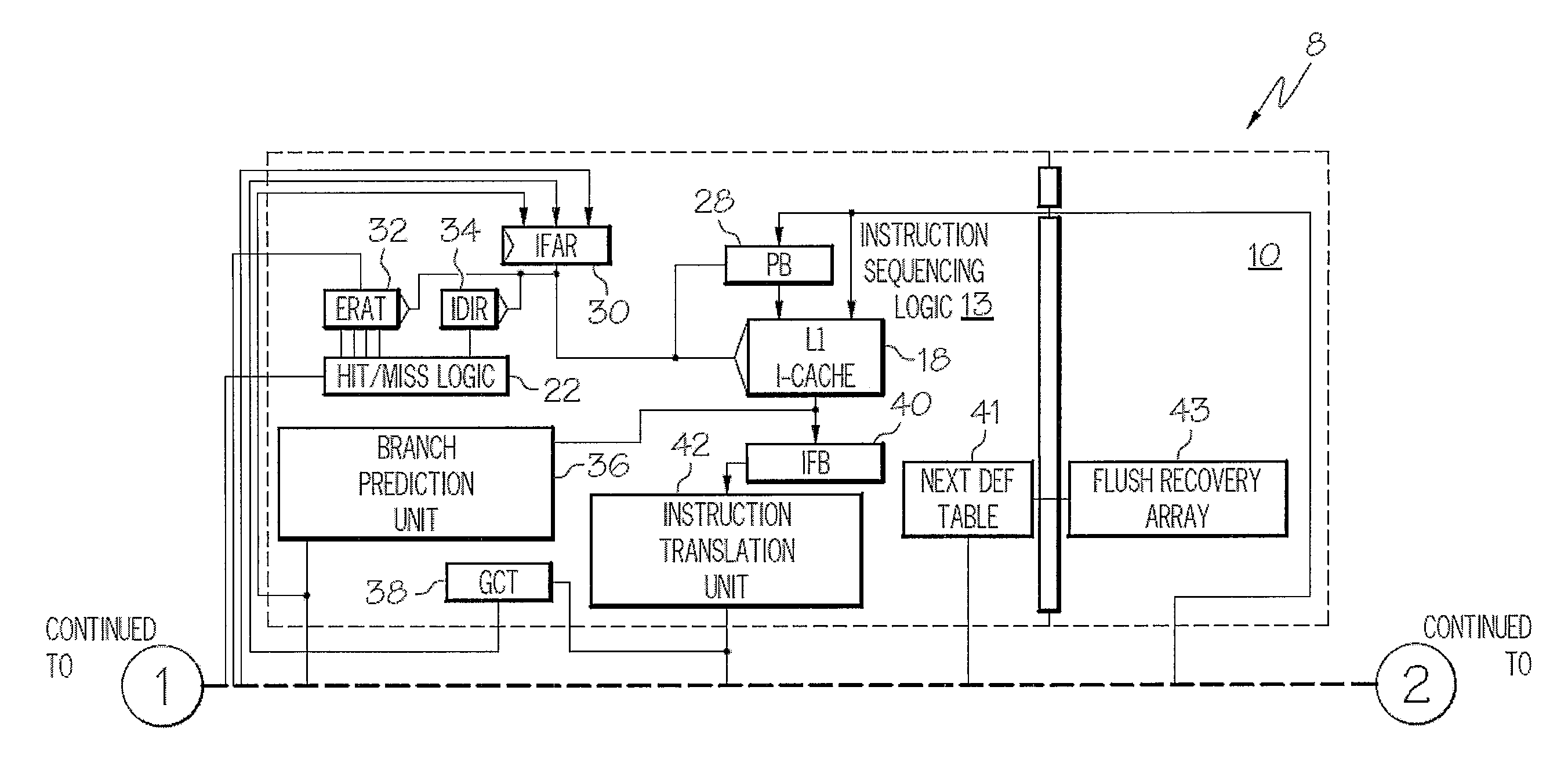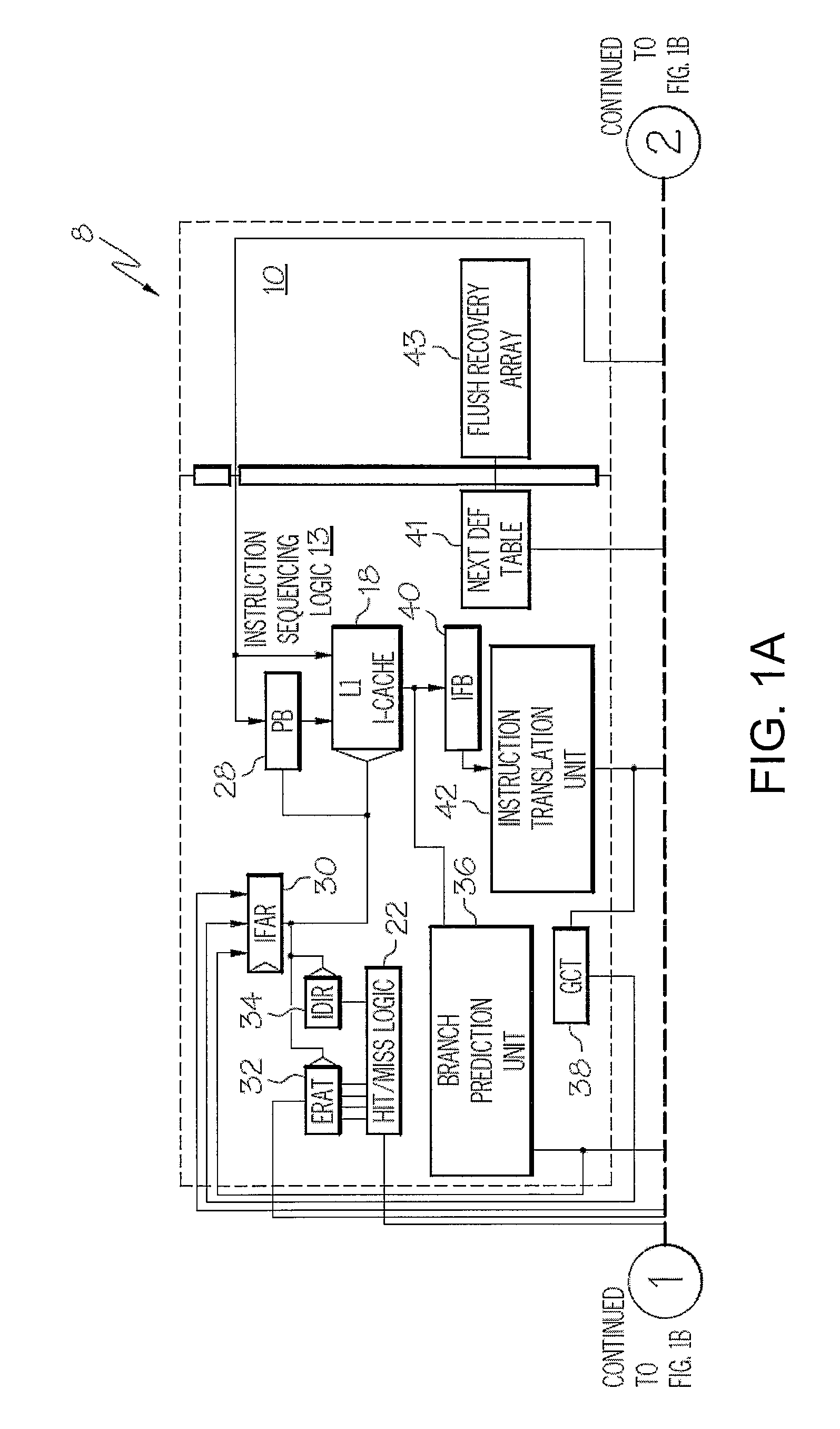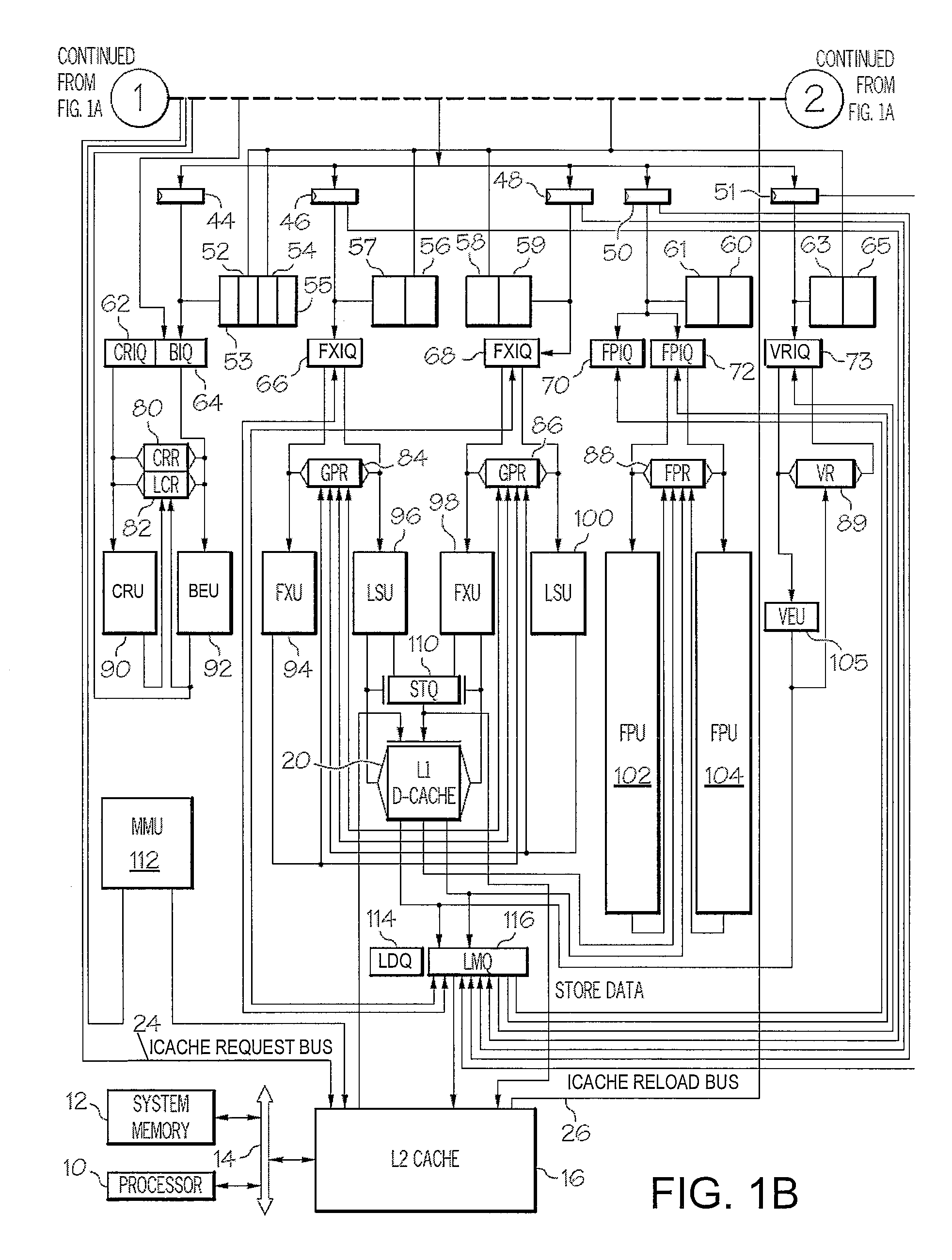System and Method for Issuing Load-Dependent Instructions in an Issue Queue in a Processing Unit of a Data Processing System
a data processing system and issue queue technology, applied in the field of data processing systems, can solve the problems of significant the execution rate of microprocessors typically outpacing the ability of memory devices and data buses to supply instructions, and the delay between the decision to issue an instruction and the actual execution of the instruction
- Summary
- Abstract
- Description
- Claims
- Application Information
AI Technical Summary
Benefits of technology
Problems solved by technology
Method used
Image
Examples
first embodiment
[0048]According to the present invention, selecting a dependent QTAG (e.g., Dep QTAG field 204) for issue the following cycle will be acceptable most of the time, since the load dependent instructions' other sources would also likely be ready. If the dependent QTAG is selected for issue the following cycle, but the dependent QTAG has a different source that is not ready for issue, then the instruction corresponding to the dependent QTAG cannot be issued as well. This effectively leads to a wasted issue cycle, since the normal age-based mechanism may have selected an instruction to issue. Essentially, this embodiment of the present invention speculates that other sources of the consumer will be ready when selected for issue by the dependent QTAG.
[0049]According to a second embodiment of the present invention, LMQ 116 may only set the bit in DQv field 206 if all of the other sources in the load-dependent instruction are ready. This removes the speculation as described in the first emb...
third embodiment
[0050]According to the present invention, LMQ 116 gives priority (in selecting the next issue QTAG pointer) to the normal age-based issue selection, over the fast dependent QTAG wakeup. The normal age-based selection is usually non-speculative, so if no instruction is found to be ready with this selection, then the dependent QTAG is selected. In this case, if the dependent instruction does not have all of its sources ready for issue, it does not issue. This is not a wasted slot, since the normal age-based issue selection did not find a ready instruction either. However, the fast wakeup of dependent instructions may benefit the performance of a critical section of code, in which case giving fast wakeup lower priority would hurt overall performance.
fourth embodiment
[0051]According to the present invention, a soft switch (e.g., a programmable register, etc.) may be implemented by hardware, software, or a combination of hardware and software to select between any of the three embodiments of the present invention described above. Software can be optimized to select an embodiment of the present invention that would be most beneficial performance-wise to the currently executing computer code.
[0052]Returning to step 324, LMQ 116 determines if a load recycle has occurred for the current load instruction, as illustrated. If not, the process returns to step 320. If so, the process continues to step 328, which illustrates LMQ 116 determining if DQv field 206 corresponding to the current load instruction has a value of 1. If not, the process continues to step 334, which illustrates a selected instruction being issued by an issue queue to a corresponding execution unit. Since there is no load-dependent instruction in the issue queue yet, the normal age-ba...
PUM
 Login to View More
Login to View More Abstract
Description
Claims
Application Information
 Login to View More
Login to View More - R&D
- Intellectual Property
- Life Sciences
- Materials
- Tech Scout
- Unparalleled Data Quality
- Higher Quality Content
- 60% Fewer Hallucinations
Browse by: Latest US Patents, China's latest patents, Technical Efficacy Thesaurus, Application Domain, Technology Topic, Popular Technical Reports.
© 2025 PatSnap. All rights reserved.Legal|Privacy policy|Modern Slavery Act Transparency Statement|Sitemap|About US| Contact US: help@patsnap.com



